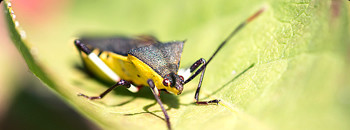Dr. John Stier, environmental turfgrass extension specialist, professor and chair of the Dept. of Horticulture-University of Wisconsin, Madison.
People all around are starting to get their yards cleaned up from winter – picking up sticks, preparing gardens, tuning up lawnmowers, etc. Mowing is a big business: there are nearly 50 million acres of lawns in the United States and surveys show that more than 90 percent of homeowners consider their lawn important. Proper mowing is essential to having a high quality, functional lawn for play, socializing, controlling runoff from rooftops and pavement, and aesthetics. A few other benefits to know about mowing include:
- A well-maintained yard can add 15 percent to a home’s property value.
- Mowed yards reduce the likelihood of disease-transmitting ticks and are related to reduced crime.
- Mowing can be good exercise, push-mowing an average lawn with a motorized mower is equivalent to a brisk walk. A person using a non-motorized push mower can burn more than 7 calories per minute, and 30 minutes provides the daily exercise recommended for most people.
Mulch Mowing
One option for mowing that is becoming more popular is mulch mowing. Mulching mowers allow the clippings to fall back into the grass which allows nutrients from the clippings to be recycled into the lawn. Most lawns should be mowed between 2.5- and 3.5-inch height, so remember the one-third rule: mow frequently enough so that no more than one-third of the leaf tissue is removed at any one mowing.
Mower Maintenance
To get the most pleasure out of your lawn, make sure your mower is in good repair before mowing. Have the blades sharpened at least once each year. Many hardware stores will sharpen blades in just a few minutes for a small fee, or, if you’re a do-it-yourselfer, you’ll find sharpening blades can be relatively easy. Check your owner’s manual for instructions on how to remove, sharpen, and install blades. For rotary mowers, which are the most common type, usually just a single nut has to be taken off to remove the blades. A few strokes with a file or grinder is all it takes.
After you have sharpened the blades, follow directions for your mower to make sure the blades are balanced on both sides. Reel mowers (the non-motorized type) are a bit trickier as reels have several blades, including the flat blade on the bottom of the mower, called the bedknife. Sharp mower blades give a cleaner cut to the grass and the grass heals quicker (matter of hours instead of days) and will grow back healthier. Dull blades tend to tear the grass, leaving grass fibers sticking out the ends of the cut leaves which will give the lawn a whitish or tan caste. Torn grass leaves also lose more water than cleanly cut leaves do.
Engine oil and filters should be changed every year. Make sure to check the engine oil level before each mowing, as an engine without enough oil can seize and a new engine will be needed. Check the spark plug and air filter (if equipped) and clean or replace as needed each year. All mower guards and other safety equipment should be in good working condition. If not, order new parts or take to a mower repair shop before mowing.
After giving your mower a tune-up, you’re ready to hit the green, benefiting your home value, your own health and your lawn’s health in the process.

